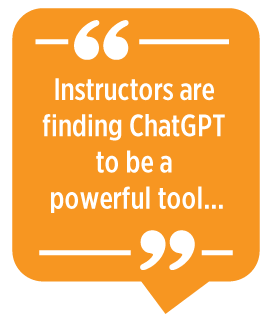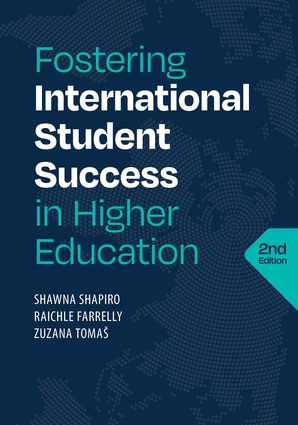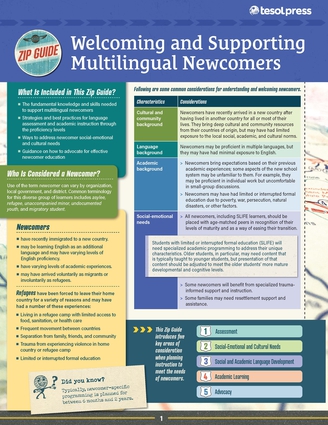Ask a TESOL Leader: "Should I be worried about ChatGPT?"
by Cynthia Wiseman
Question: "How is ChatGPT being used in ELT? Should I be worried about my students using it?"
ChatGPT
is generating a lot of buzz these days. Though OpenAI,
the company that developed this artificial intelligence (AI) neural network,
has been working on this large language model for years, access to this latest
iteration ChatGPT-4 just became available to the general public in November
2022. Since then, ChatGPT use has gone viral (pun intended). How are
instructors and students using ChatGPT? And should we as instructors be
concerned about it? Just out of professional curiosity, I created a survey for educators to see who is using
ChatGPT, how they are using it, and what they think about it. So far, the
results have been interesting!
 First off, students are already using
ChatGPT. English language learners, like their English-fluent counterparts, are
finding ChatGPT helps them proofread their texts to express their ideas more
accurately through its essay revision capability, for example grammar checks
and citation suggestions. Some students are even using ChatGPT to generate a
first draft of an assignment. Learners are also using it for practicing English
conversation in chats on various topics. Having access to this powerful AI
resource seems to motivate our students and helps lower their stress levels in
reading and writing in English.
First off, students are already using
ChatGPT. English language learners, like their English-fluent counterparts, are
finding ChatGPT helps them proofread their texts to express their ideas more
accurately through its essay revision capability, for example grammar checks
and citation suggestions. Some students are even using ChatGPT to generate a
first draft of an assignment. Learners are also using it for practicing English
conversation in chats on various topics. Having access to this powerful AI
resource seems to motivate our students and helps lower their stress levels in
reading and writing in English.
Teachers have also logged onto OpenAI and
are using ChatGPT as aids in lesson
planning, quiz and rubric development, materials development, and adaptation
of text to different reading levels to support individualized
instruction. For the research required for professional development,
instructors are finding ChatGPT to be a powerful tool in brainstorming ideas,
summarizing research, and outlining and organizing an academic paper. In
seconds, given the right prompt, ChatGPT can summarize the research on any
topic, a task that might have taken an in-service teacher working on their
master’s a year to accomplish pre-ChatGPT.
Given all these advantages, what’s the
big deal? What should we be concerned about? The flip side of the advantages
that come with the power and efficiency of AI are not yet clear. For many,
plagiarism is a major concern. Some teachers have already received AI-generated
texts that were essentially rewrites of the directions for the assignment.
Other teachers in anticipation of these situations are proactively setting
guidelines and directions for the use of ChatGPT, such as by inviting students
to bring in AI-generated drafts as the first step in the writing process. As
life-long learners ourselves, we educators have some notion of what learning
is. It takes emotional and mental engagement with the context, ideas, or other
people to learn and produce knowledge. We believe that the efforts put into shaping
and honing ideas and in rewriting and revising texts are essential to learning.
Is crafting a specific prompt to feed into ChatGPT and reading through the
output enough engagement for learning to occur? Will students who rely more and
more on ChatGPT continue to develop cognitive abilities and critical thinking
skills?
Though some English language instructors
are leery of this new technology, others are ready to embrace it. Instructors
will have to use ChatGPT themselves to understand how AI can be used to support
teaching and learning. Educational institutions will have to provide
guidelines, carefully revising plagiarism policies to clearly define
AI-generated texts and define plagiarism to include the submission of such
texts as one’s own without citing the source.
Whether the concerns outweigh the
benefits is still open for debate. But one thing is clear: ChatGPT, like the
cell phone, the internet, and the personal computer before it, is here to stay.
We can’t turn the clock back, and so we have to find a way to harness this
powerful technology.
What do you think?
Please fill out the brief 5-minute survey
and share your thoughts!
Do you have a question for the TESOL leadership? Email your question to tc@tesol.org with the subject line "Ask a TESOL Leader" and it could be featured in this column!
Cynthia Wiseman is a professor in academic literacy & linguistics at the Borough of Manhattan Community College at City University of New York. She has been exploring ChatGPT-4 after attending a conference session on AI and has used ChatGPT with students in her Introduction to Linguistics and Language and Culture classes. She has been an English language teacher and teacher trainer for more than 40 years, working in the United States and internationally. She served as a Fulbright Scholar in Vietnam at Pham Van Dong University in Central Vietnam and conducted a study on the use of the communicative approach in ELT in China while working there as a teacher trainer. She earned a doctorate in applied linguistics from Teachers College, Columbia University with a concentration on evaluation and assessment. Dr. Wiseman currently serves on the board of directors of TESOL International Association.
TESOL Blogs
Interested in writing a blog for TESOL?
Read the submission guidelines and send us your post!
Check out some of the most recent TESOL Blogs:
|
3 Strategies to Reflect on Our Biases, by Naashia Mohamed

Some time ago, I facilitated a faith-based workshop for a group of multilingual women from different ethnic backgrounds. English was our lingua franca, but I wanted to end our session with a prayer in Arabic. During a break in our programme, I approached Seema, a participant I knew was an Arabic speaker. She was older than the rest of the group, and well respected by others. Assuming she would be perfect for this task, I asked if she would be comfortable leading us in the prayer to end our session. She agreed. Read more. |
|
4 Ways of Combating “PD Amnesia”, by Laura Baecher

In this blog series, I have emphasized the need to make professional development (PD) more creative, more teacher-led, and more tied to local concerns. One of the other aspects too often neglected in PD is seeing the follow-on/up/through to teachers’ actual practices post-PD. And not just the week after, but weeks or even months afterwards.
We all have those treasured activities that we picked up from a PD experience which we are excited to try out right away in the classroom. These often become sparks that yield a whole set of variations and even shift our mindsets about approaches we hope to take up in our ever-emerging teacher identities. Read more. |
|
When Multilingual Learners Refuse to Speak Their Home Language, by Judie Haynes

Over the years, I have taught many multilingual learners (MLs) who resisted speaking their home language as they became proficient in English. I remember well one student, Kenji Matsuyama. Kenji was born in the United States shortly after his family arrived from Japan for his father to take a new job. He was a native speaker of English by the time he started school in kindergarten. After third grade, Kenji no longer wanted to speak Japanese at all. He asked his parents to not speak Japanese in school or in front of his friends. He was proud to be the only American-born member of his family. Read more. |
TESOL Bookstore

Featured Resources from TESOL Press
ELT Basics is an invaluable resource for those seeking a straightforward, practical, and foundational understanding of English language teaching. This book covers a broad range of important topics, such as what it means to “know” a language, how people learn new languages, and what teachers can do to teach English effectively. Whether you’re looking for a basic understanding of ELT or considering a career in language teaching but want to know more first, this book will teach you about language acquisition as well as how to plan, instruct, and assess multilingual learners of English.
 Fostering International Student Success in Higher Education, Second Edition
Fostering International Student Success in Higher Education, Second Edition
Shawna Shapiro, Raichle Farrelly, Zuzana Tomaš
(Copublished by TESOL and NAFSA)
The increase in the number of international students attending English-dominant schools brings benefits as well as challenges for institutions. Shapiro, Farrelly, and Tomaš provide a lively, informative discussion that answers the questions instructors commonly ask when seeking to ensure success for these students: What do I do to help students be successful in U.S. academic culture? How can I ensure that the content for my course is comprehensible to students who are still learning English? How do I design assignments and assessments that are fair while still acknowledging the difficulty of doing academic work in a second or foreign language? How might I treat international students as a linguistic and cultural asset in the classroom, and help them to become institutionally integrated?
 TESOL Zip Guide:
TESOL Zip Guide:
Welcoming and Supporting Multilingual Newcomers
Amber Warren, Melissa Hauke, Jan By Ying Hui-Michael, Adrienne Johnson
Newcomers are students who have recently immigrated to a new country, may be learning English as an additional language, and may have varying levels of English proficiency. This guide introduces five key areas of consideration when planning instruction to meet the unique social-emotional, linguistic, cultural, academic, and programming needs of multilingual learners of English who are newcomers. It includes strategies and best practices for language assessment and academic instruction through the proficiency levels, and guidance on how to advocate for effective newcomer education.